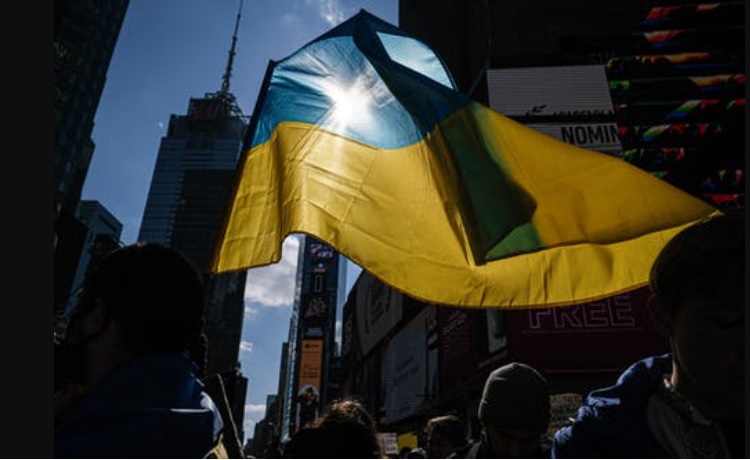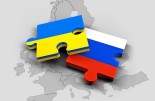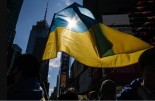BlueBay AM: Modern day heroes
BlueBay AM: Modern day heroes

By Mark Dowding, CIO, BlueBay Asset Management
Putin’s regime becomes increasingly isolated from the international community as invasion newsflow out of Ukraine shocks the world.
With the reality of war in Europe filling our screens with upsetting images, it feels like we have witnessed the biggest shift in the geopolitical landscape since the fall of the Berlin Wall in 1989. The sense of shock in European capitals has acted as a catalyst for the EU to unite behind a comprehensive set of sanctions in concert with other countries, which are already having a crippling effect on the Russian economy.
Previously, it had seemed that several countries in the EU were more interested in appeasing Putin and looking after their own interests, having sacrificed energy security in the wake of misguided policies. Yet, it could be argued that as Putin started killing civilians on an indiscriminate basis, he has done more to galvanise the EU and create unity within the bloc than many have managed to achieve over the past 30 years.
At this point, our assessment is that the Kremlin is in a position where they now know their invasion won’t be winning the hearts and minds of the Ukrainian people, as they may have naively persuaded themselves. Yet, they cannot afford to withdraw or look weak. Consequently, it may appear depressingly inevitable that a Grozny-style path to annihilation will be adopted.
Over the longer term, this is certainly a war that Russia cannot win. Any attempt to occupy will end up as a modern-day Afghanistan and troops will eventually need to withdraw. However, it is upsetting to imagine the human cost that may be paid in the interim. Moreover, the more that Putin is cornered and desperate, the greater the risk that he does desperate things. The nuclear threat can be considered in this context and will remain a reason why the West cannot and will not intervene in Ukraine in a military capacity. Meanwhile, we may expect to witness an increase in cyber-attacks and moves to restrict flows of oil and gas to inflict pain on the global economy.
The Russian banking sector is facing collapse, oligarchs have had lifestyles upended and hardship will soon be felt on a national basis. Yet Russians have a history of seeing their savings snatched from them.
Historically, they have also tended to be a compliant populous. There may be an amount of heart pouring online and waving of flags, but in a country like Russia, hard power dominates over soft power. In that context, it remains hard to imagine the masses storming the Kremlin any time soon.
Turning to the global economy, any impact on growth may come from three distinct channels:
- as a result of supply chain disruptions from cutting off Russia,
- via the hit to incomes from rising commodity prices, notably oil,
- a tightening of financial conditions in the wake of adverse market performance.
In each of these regards, we see the US economy as relatively insulated and the eurozone as more exposed. However, subject to oil prices remaining below USD120, we would only project the hit to eurozone GDP at 1-1.5% based on what we know today. At the same time, we would perceive inflation to rise by a comparable amount.
Another factor that needs to be considered is the policy response, which we can already see starting to unfold. Firstly, we expect to see a material jump in defence spending. Secondly, we would anticipate strong policy initiatives to ramp-up energy infrastructure in order to limit dependence on Russian oil. Thirdly, we would expect substantial support packages to help deal with the large flow of refugees fleeing the conflict zone.
In aggregate, this may point to a relatively material fiscal stimulus in the weeks and months to come. In that context, it is less clear that events in Ukraine per se will have a very material impact with respect to monetary policy in the medium term, save for a desire to proceed with the removal of existing policy accommodation at a measured pace.
In light of this, we still believe that we will see six hikes from the Federal Reserve in 2022, taking rates to 1.5%. Inflation remains a problem, the economic backdrop is robust and there is little slack in the economy. In the eurozone, we expect asset purchases to cease at the end of this year and for interest rates to rise to 0% by March 2023.
Meanwhile, in the UK we also see interest rates at 1.5% by the end of 2022, with further monetary tightening needed in 2023 as inflation continues to overshoot. Consequently, we continue to adopt a short duration bias. Having flattened rates risk before the Russian invasion, we have now returned to a moderate short stance on an overall basis. We continue to favour euro rates versus Treasuries and Gilts.
Specifically, we are constructive on euro swap rates on a relative basis. 10-year swap spreads in the eurozone have reached 75bp, matching levels only seen at the height of the stress in the global financial crisis and euro sovereign crisis. This appears a mis-pricing to us, particularly considering that the central clearing of swaps has now removed credit risk from these instruments. Moreover, as central bank purchases of government bonds wind down and as expansionary fiscal policy adds to bond supply, it seems that bonds should be much less expensive relative to swaps in the medium term, suggesting much narrower spreads.
Credit markets have been buffeted by events in Ukraine, coupled with a rise in volatility and a drop in liquidity. Nevertheless, the broader flight-to-quality theme has been relatively contained. The underperformance of higher beta bonds in a decompression trade has led to a material re-pricing in a number of sectors and issuers, but markets have not been as disorderly as one may have feared given the global backdrop.
Credit investors have been trying to grasp how recession risks may have become more elevated in the wake of events, in the context of the impact on corporate earnings and a possible default cycle. However, it is worth recalling that wartime economies don’t normally experience recession as a result of fiscal largesse, so we think that where these risks are expressed they may be overplayed, offering the opportunity to add to exposures in favoured names at attractive levels.
Sentiment in emerging markets, away from Russia and those in the immediate vicinity, has also been relatively robust. Higher oil prices are weighing on energy importers, such as India and Turkey, and favouring commodity exporters. China policy easing is also leading to some brightening of the macro outlook. This can also be seen as a supportive factor, as is the rapid retreat of the pandemic as the Omicron wave begins to die down. Again, we see examples of some assets becoming mis-priced in the wake of volatility.
Romania is one example, where long-dated euro-denominated bonds have reached 5% yields, prompting us to add exposure. We see Romania as a robust investment-grade name, which is currently struggling as a result of being in the wrong postcode and with a poor technical in the wake of heavy recent issuance.
However, as an EU sovereign, we see little threat to Romania itself from Russian adventurism and the deployment of fiscal funds also stands to benefit the country materially in 2022.
Meanwhile, many EM investors continue to focus on events with Russia itself. Bonds have become illiquid and untradeable, leading managers who had overweighted Russian assets to need to suspend a number of funds. Having flagged the possibility of an invasion of Ukraine for some time, we had adopted an underweight stance across our strategies, also noting that our very negative ESG analysis of the Russian regime had made it uninvestable for many of our mandates.
In the coming days, it will be interesting to see what index providers do with respect to Russia. Despite the desire to eject Russia from benchmarks, there are sure to be some large money managers and passive funds lobbying to retain it as they are unable to exit. Once again, the perils of a passive approach have been laid out for all to see.
Looking ahead
The geopolitical outlook is volatile and uncertain. There is a sense that we may trade from headline to headline. Yet, much as we might dearly want to see the plucky heroes in Ukraine prevail, or Russians rise up and depose Putin, there may be a sense that a grinding campaign of devastation appears the most likely outcome for now, given the overwhelming military superiority in Russia’s favour, much of which it has yet to deploy.
Outrage and anger are unlikely to die down in the West, but from a purely financial markets perspective, it is possible that this becomes a less dominant driver of price action as investors return to focusing on macro and corporate fundamentals.
The coming week sees US payrolls and the CPI report – the release of which will coincide with the start of the ECB press conference. In this context, there are plenty of other macro drivers to focus on in the days ahead.
In the short term, uncertainty is extremely elevated and it may be dangerous reading too much into a couple of days of price action. Perhaps one thing that can be taken as certain is that the stand of Zelensky and others resisting the unjustifiable actions of a despicable tyrant will see them remembered as heroes for many years and generations to come.



